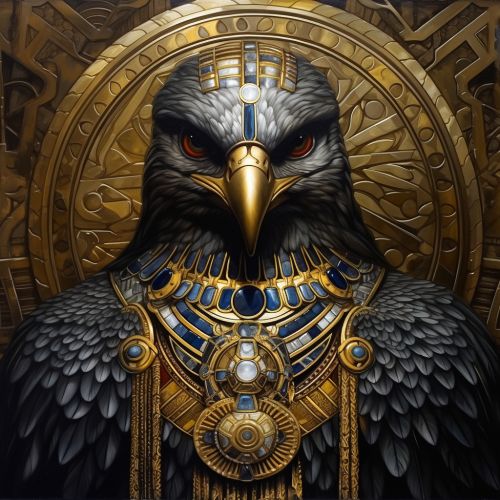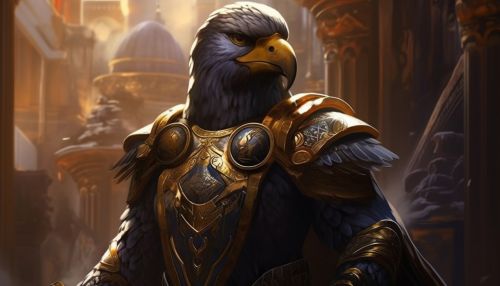Horus
Overview
Horus is one of the most significant ancient Egyptian deities, who served many functions in the Egyptian pantheon, most notably being the god of the sky, war and hunting. He is often depicted as a falcon or a man with the head of a falcon.


Etymology and Iconography
The name "Horus" is the Latin version of the Egyptian "Hor," which means "the Distant One," a reference to his role as a sky god. Horus is often depicted as a falcon or a man with the head of a falcon. The falcon was a symbol of divine kingship, and the specific species of falcon shown in the iconography is thought to be the lanner or peregrine falcon.
Historical Development
Horus was worshipped from at least the late Predynastic period of Egypt. He was most often depicted as a falcon, most likely a lanner or peregrine falcon, or as a man with the head of a falcon. The earliest recorded form of Horus is the patron deity of Nekhen in Upper Egypt, who is the first known national god, specifically related to the ruling pharaoh who in time came to be regarded as a manifestation of Horus in life and Osiris in death.
Mythology
Horus is one of the oldest and most significant deities in the ancient Egyptian religion, who was worshipped from at least the late Predynastic period through to Greco-Roman times. Different forms of Horus are recorded in history, these are treated as distinct gods by Egyptologists. These various forms may possibly be different perceptions of the same multi-layered deity in which certain attributes or syncretic relationships are emphasized, not necessarily in opposition but complementary to one another, consistent with how the Ancient Egyptians viewed the multiple facets of reality.
Horus and the Pharaoh
Horus was directly linked with the kingship of Egypt. The reigning king was viewed as a manifestation of Horus, the living god on earth. This association began with the earliest myths of the god's conflict with Set, the god of chaos and disorder. In these myths, Horus was the son of Osiris and Isis, and he battled with Set for the throne of Egypt after Set murdered Osiris.
Cult Centers
The main cult center of Horus was in the city of Pe, which was known as the "House of Horus". The city was located in the Nile Delta and was one of the oldest cities in ancient Egypt. Other important cult centers were located in Behdet, Khem (Letopolis), and Heliopolis.
In Popular Culture
In modern times, Horus continues to be studied and referenced in various forms of popular culture including literature, music, film, and television. He is often used as a symbol of power, wisdom, and the struggle between good and evil.
